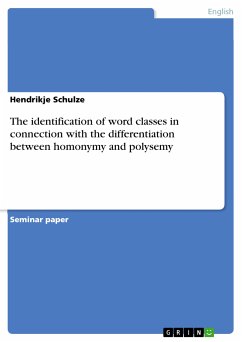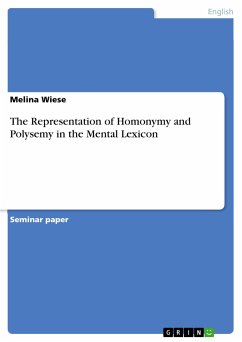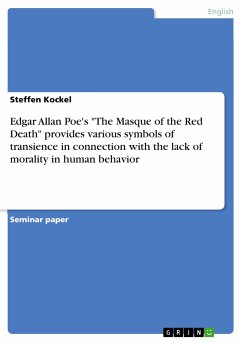Seminar paper from the year 2001 in the subject English Language and Literature Studies - Linguistics, grade: 2,3, http://www.uni-jena.de/ (Anglistische Sprachwissenschaft), language: English, abstract: This paper is concerned with the linguistic phenomena of homonymy and polysemy. The term homonymy goes back to the Greek words "homós", meaning "the same", and "ónoma", meaning name. A simplified translation of homonymy would be "having the same name". The term polysemy goes back to the Greek language, too. It is composed of the words "polys", meaning "a lot of", and "sema", which can be translated with "meaning". Simply said polysemy is the phenomenon of one word carrying different meanings. Homonymy as well as polysemy are rather complex linguistic phenomena. Both have been discussed in connection with each other for a long time. The central point of discussion is the question whether one is confronted with different lexical items which are formally identical, i.e. homonymy, or whether there is just one single lexical item with different meanings, i.e. polysemy. This is especially important with regard to lexicography. It plays also a role in connection with the classification of word classes. Different criteria have been introduced to distinguish clearly between homonymy and polysemy. Nevertheless, the question remains whether an unambiguous distinction can really be made. This question will be discussed in the following paper.









